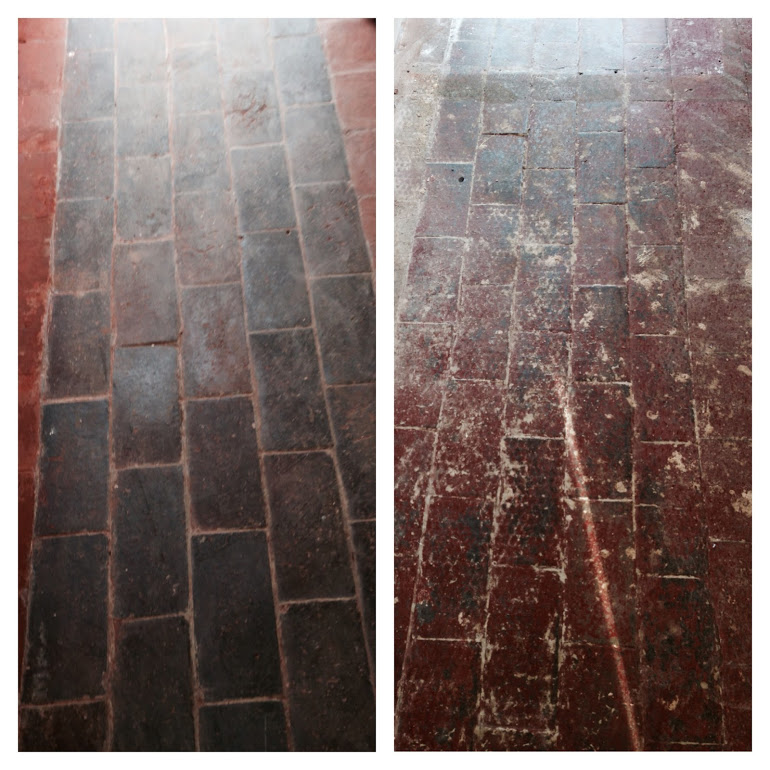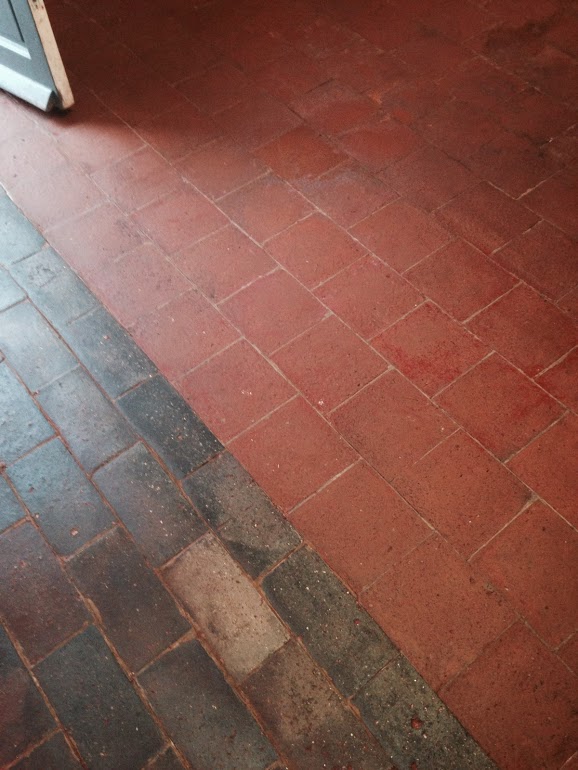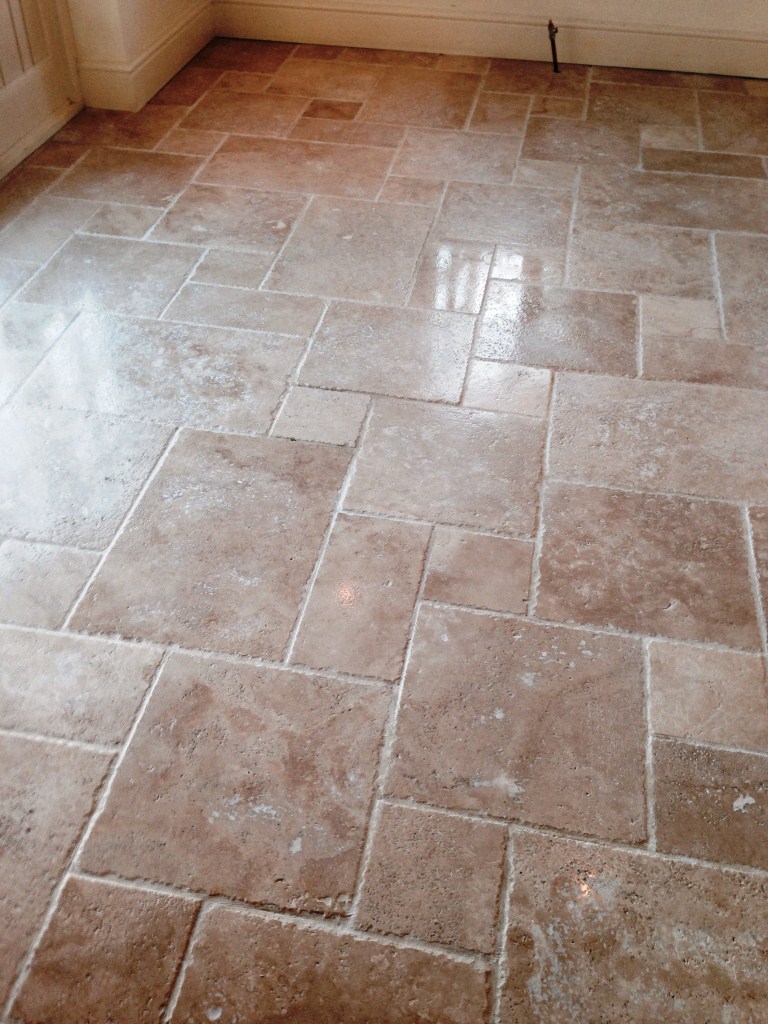Original Minton Tiled Floor Damaged by Cable Installation Restored in Rugby
Recently I was called out to a property in Rugby which had a lovely Victorian period Encaustic Tiled Floor. The had only just moved into the property and had, like many of my customers seem to do, decided to replace the hallway carpet. Underneath they were pleased to discover a beautiful Black and White tiled floor laid in a classic diamond pattern.
Unfortunately, as they removed the carpet the discovered that it had been covered over to hide an ugly section of cement that went across the width of the hallway. Suspecting they had an Original Minton tiled floor they were keen to have it restored and so got in touch with Tile Doctor.
I do a lot of work repairing and restoring tiled floors in the area so I was more than happy to provide a quote for repairing the damaged section and then renovating the floor. I have also built up a collection of spare Minton tiles because of this so they had come to exactly the right place.
Repairing a Damaged Victorian Tiled Hallway in Rugby
The first step in the restoration was to carefully break out the cement backfill that had been run across the floor. We often see this sort of thing when heating is installed to hide a heating or gas pipe so I had to do this very carefully so as not to damage whatever had been covered over.

To my surprise the cement was hiding a couple of power cables encased in steel wire armour for protection. With the channel exposed it was then backfilled with cement screed to bring it level with the original base and then left to set overnight.
The next day work started with the cutting and shaping of the replacement tiles to exactly match the original pattern. Once I was happy with the pattern the tiles were stuck into place and grouted in. The next step would be to clean the floor with a buffer machine so once the replacement tiles were in place I left it to set overnight again.
Deep Cleaning a Victorian Tiled Hallway in Rugby
On day three I started by inspecting the previous day’s repairs and confirming the floor was solid which it was. All was well so I set about cleaning the tiles using Tile Doctor Remove and Go starting with the corners and edges which were scrubbed by hand. This product is a strong tile cleaner which is also good for removing old sealers.
With the corners and edges done I then moved onto the main floor which was scrubbed using a coarse 200-grit diamond pad fitted to a rotary machine. Carpets and underlay imprint a pattern onto the tiles when left for many years and these pads are great for removing this as well as further cleaning up the tiles. The cleaning solution darkens with the soiling and this is then extracted using a wet vacuum.
 |
 |
With the whole floor cleaned in this manner the process was repeated with Tile Doctor Acid Gel which further cleans up the tiles and has other advantages such as dissolving any efflorescent salts that may have built up in the tiles. Efflorescence is a common problem with these old floors which don’t have the benefit of a damp-proof membrane. To scrub the floor, I used a couple more diamond Burnishing pads of finer grits which helps refine the appearance of the tile following the application of the coarse 200-grit.
After this the floor was rinsed and wet vacuumed to remove as much moisture as possible.
Sealing a Victorian Tiled Hallway
The following day the floor was checked in several places to ensure it had dried sufficiently overnight. We know from experience it’s not a good idea to apply sealer to a damp floor as it can result in a patchy appearance.
The checks were fine and so the floor was sealed with an initial coat of Tile Doctor Stone Oil which adds structure to the tile and then when dry followed up with a couple of coats of Tile Doctor Colour Grow to improve colour. Both these products are Impregnators and allow for vapour transmission which is ideal for old floors like this one.

Impregnators work by soaking into tile, occupying the pores and thereby preventing dirt from residing there. This keeps dirt on the surface where it can be easily cleaned away. Once done the owners were very pleased and really happy that the original floor was now 100% intact and had been put back into daily use.
For aftercare I recommended Tile Doctor Neutral Tile Cleaner which is a gentle yet effective tile cleaning product that won’t impact the sealer and reduce its life.
Professional Restoration of a Victorian Tiled Hallway in Warwickshire
Original Minton Tiled Floor Damaged by Cable Installation Restored in Rugby Read More »










































































































































































































































































































